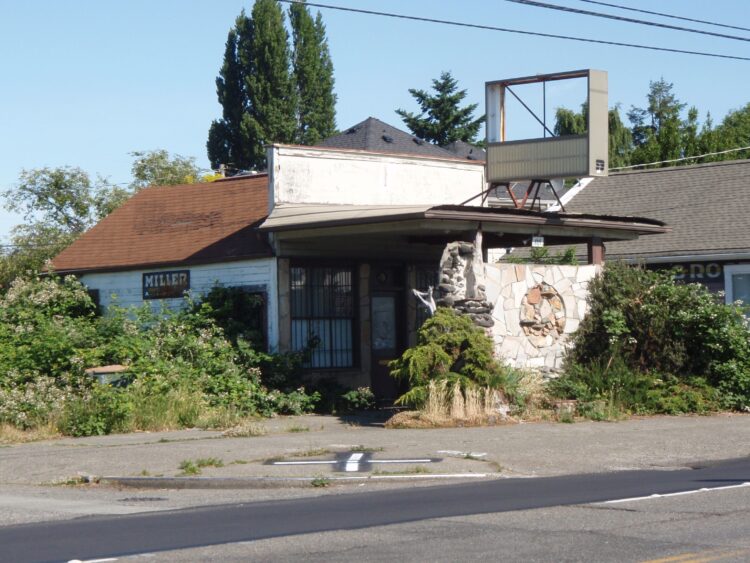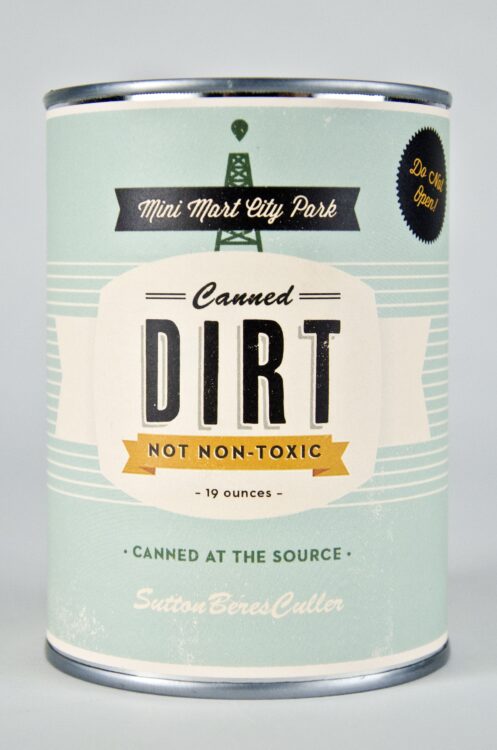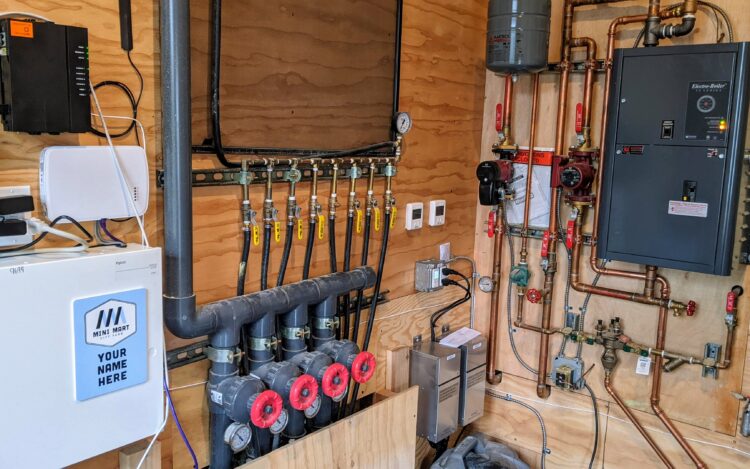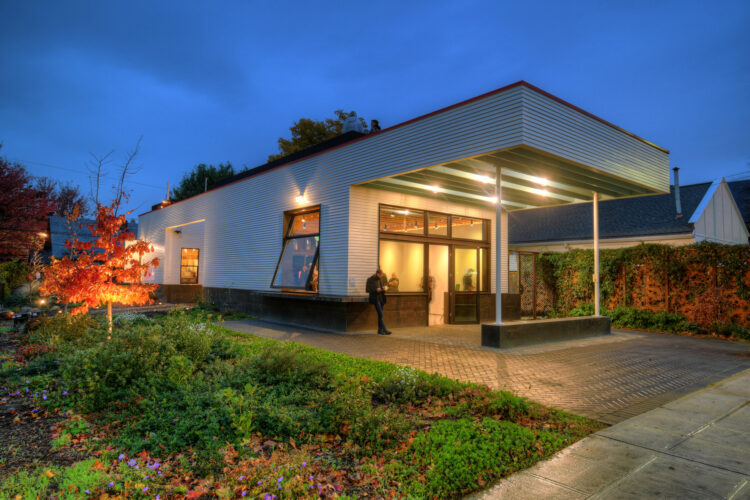SuttonBeresCuller’s Artist Diary: Mini Mart City Park
How does one transform an abandoned gas station and convenience store into a dynamic community space? SuttonBeresCuller (Creative Capital Grantee 2008)—otherwise knows as John Sutton, Ben Beres, and Zac Culler—address this challenge with their Creative Capital Project, Mini Mart City Park, debuting this Saturday, July 9, in Seattle, WA. Blurring the boundaries between public art, architecture, environmental activism and green design, the area has been reimagined both visually and functionally, working with concepts like urban forests and environmental sustainability, re-inscribing them as art into the domain of everyday life.
SuttonBeresCuller have been collaborating since 2000, and working on this project for nearly 15 years. Read on to learn about how they pulled this off, and what’s next for Mini Mart City Park!

Source unknown.
Pictured here is an image of the Perovich Bros. Gas Station in the 1930’s. Built near the entrance to Boeing Field, it stored 2- 10,000 gallon tanks of fuel, abnormally large for such a small site. The site is located near the Duwamish River, one of the nation’s largest superfund sites.

Photo: SuttonBeresCuller.
Decommissioned in the 1980’s the building and site served as a cafe, a laundromat, and ironically, a storage lot for an environmental remediation company. In 2005 SuttonBeresCuller had a vision to identify and purchase a property in King County and rehabilitate it, proving the potential of art to propel a project that simultaneously repairs damaged land while providing shared, multi-use community space.
In 2008, we identified the Mini Mart City Park site and began environmental assessment work.

Photo: SuttonBeresCuller.
With the help of King County Brownfields and the EPA we underwent multiple rounds of testing, Phase I and II targeted brownfield assessments and learned that we were sitting over a large plume of gasoline, roughly 16 feet below the surface.

Photo: SuttonBeresCuller.
Here is what the testing uncovered. This was described to us as “a worst case scenario,” contaminants in the soil at the groundwater, 16-20 feet below the surface. More testing was deemed necessary and the waiting game began.

Photo: SuttonBeresCuller.
Waiting for years on different soil tests, we activated the space with music, paintings, and art installations. With the support of an Art Matters Grant we received funding to can our “not non-toxic” dirt as a fundraiser. Our thought was if enough people bought cans of dirt, the property could be cleaned, one person, one can at a time.

Photo: SuttonBeresCuller.
After we identified the shape of the plume, we moved to the next phase. Sadly, we were not able to keep the original structure due to years of neglect, further remediation steps, and construction needs. After forming a non-profit in 2013, we purchased the 5300 sq ft property with support from 4Culture, a King County arts funding organization. They have been instrumental during this process. Throughout the years we have had so many people and organizations help us along the way.

Photo: SuttonBeresCuller.
With the support and engagement of the Georgetown community, Mini Mart City Park began construction. Working with GO’C Architecture and Design and Metis Construction we developed a design for a pocket park and arts-oriented community center.
Incorporating sliding walls and a green roof to create a porous, modular space that blends indoor and outdoor activities such as gallery shows, movies in the park, potlucks, community meetings, readings, and live music, Mini Mart City Park will embrace the site’s history, bring communities together to dream up their futures, and literally clean earth with art.

Photo: SuttonBeresCuller.
One of the main goals of the project was to find a way to clean the earth without removing tons of contaminated soil. We installed an air sparging system that is a remediation process used to treat saturated soils and groundwater contaminated by volatile organic compounds and fuels. Air sparging uses pressurized air to volatilize hydrocarbons and enhances the biodegradation of hydrocarbons. Our system has been running for just over one year and has removed over 200 pounds of petroleum so far. We expect the system to be running for the next 3–5 years.

Photo: SuttonBeresCuller.
Our work is rooted in the belief that it is vital to create community hubs for people to build power and a voice in decisions being made to develop their neighborhoods. MMCP will serve as an artist-designed, community-led space advocating for creativity and public health through art exhibits, residencies, environmental action, and locally-focused programming in the Lower Duwamish Valley for decades to come. In November of 2021, after many hurdles, we held our first event. Over the past few months we have held community council meetings, multiple classes, art events, and tree give-aways.

Special thanks to Creative Capital for believing in this project from the beginning. Please visit us next time you are in Seattle and consider donating to help this organization flourish.
